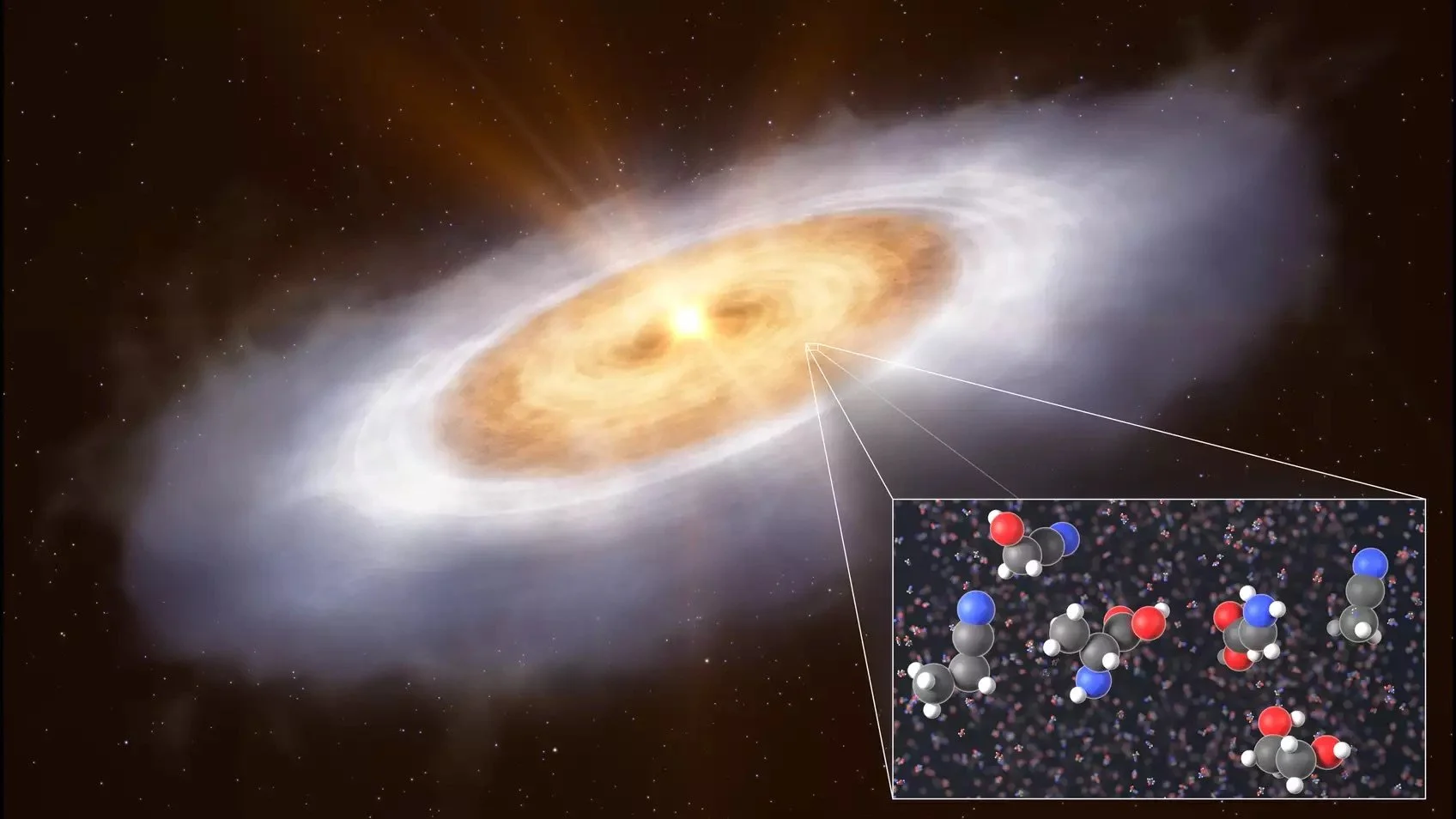
Cosmic-ray Astrochemistry
Emmy Noether Group

Cosmic ray astrochemistry
from atomic to astrophysical scales
The Emmy Noether group focuses on studying the role of energetic particles, dubbed cosmic rays, from the atomic to astrophysical scales. The research we conduct is interdisciplinary, including theoretical chemistry, computational astrophysics, and astrochemical modeling, to unify our knowledge from the micron to parsec scales.
RESEARCH HIGHLIGHTS
Searching for Prebiotics in Protoplanetary disk V883 Ori
Research carried out by PhD student Abubakar Fadul while at the Max Planck Institute for Astronomy, with Dr. Kamber Schwarz
Complex organic molecules (COMs), typically defined as carbon-bearing species with six or more atoms, have been widely detected in space. A subclass of these, known as prebiotic molecules, are thought to play a key role in the formation of life. We report the first tentative detection of two such prebiotic precursors (ethylene glycol and glycolonitrile) in a protoplanetary disk. These molecules are considered potential precursors to sugars and amino acids, fundamental building blocks of life. Our findings suggest that complex organic molecules are inherited from earlier stages of star formation and continue to evolve during the disk phase. This supports the idea that the chemical conditions necessary for life may be widespread in the Universe, making the emergence of life more universal than previously thought.
Appeared in ApJL, August 2025
Paper: ADS | arXiv
Press release: MPIA Press Office
Analytic Estimation of Attenuating Column Densities
Research carried out by PI Dr. Brandt Gaches
A parameter of key importance in astrochemical models is the column density of gas that attenuates the external radiation field. In complex simulations, this can be computed using expensive raytracing schemes, while for one-zone (0D) or one-dimensional chemical models, it is provided as an input. In the paper, I present an entirely analytic model to estimate the average attenuating column density expected as a function of gas density. The model assumes a hierarchical turbulent cloud undergoing gravitational collapse. The analytic form is able to reasonably-well reproduce the average fitted trends found from previous suites of three-dimensional simulations. The model can be utilized to provide more robust constraints on this parameter in astrochemical modeling, rather than leaving it as a purely free parameter. The figure compares a fiducial model for the solar neighborhood (and the components) with the 3D model fits (red).
Appeared in A&A Letters, August 2025
Paper: ADS | arXiv
Meet the Team
-

Brandt A. L. Gaches
Group leader, MC 364
brandt.gaches(at)uni-due.de -

Manuela Adam-Skowranek
Sekretariat, MC 367
manuela.adam@uni-due.de -

Abubakar Fadul
PhD student
-

Arghyadeb Roy
Research assistant, Indian Institute of Science Education and Research Kolkata. Investigating the radiation signatures and diagnostics of cosmic-ray induced chemistry.
Interesting in Joining?
We are always looking for motivated Bachelor’s and Master’s students who are interested in astrochemistry, cosmic ray physics, and star formation! This includes students with primary interests in physics or chemistry, with possible projects ranging from theoretical chemistry investigations of electron-impact physics, astrochemical modeling of molecular clouds, and analyzing magneto-hydrodynamic simulations or data from the James Webb Space Telescope. Interested students should feel free to send me an email!
The group can also act as a host for postdoctoral fellowships. In particular, I would be willing to support and help interested postdoc candidates to apply for independent funding to join the group, such as a Humboldt postdoctoral fellowship, a DFG Walter Benjamin fellowship, or an EU Marie Curie fellowship.
Current in-office coffee
Father’s Coffee Roaster
Ethiopian heirloom (Gedeb), slow dry natural processing
HAYB Specialty Coffee
Ethiopian heirloom (Sidamo), bourbon-barrel aged








